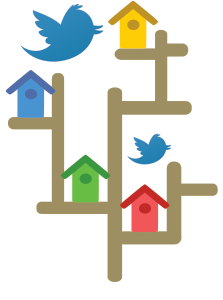If you enter #EMTOT (Emergency Medicine Tricks of the Trade) into a Twitter search you’ll  certainly find some clever ideas. But this hashtag isn’t used as often as it could be. That doesn’t mean there aren’t a slew of tweets that fit the category. Here are five recent posts that should have been tagged #EMTOT, but weren’t.
certainly find some clever ideas. But this hashtag isn’t used as often as it could be. That doesn’t mean there aren’t a slew of tweets that fit the category. Here are five recent posts that should have been tagged #EMTOT, but weren’t.
Explore This Issue
ACEP Now: Vol 33 – No 07 – July 20141 Canadian EM physician Ken Milne, MD (@thesgem), kicks things off with one of my personal favorite tricks. “…How about cranking tunes to distract peds during procedures? http://thesgem.com/2014/06/sgem78-sunny-days-pediatric-pain-control/ #FOAMed #MedEd.” The link goes to the blog post associated with Dr. Milne’s latest episode of his increasingly popular podcast, The Skeptics Guide to Emergency Medicine (tagline: “Meet ‘em, greet ‘em, treat ‘em, street ‘em”). Letting kids listen to music is not just being a nice doctor—it is evidence-based! Dr. Milne and his guest Anthony Crocco, MD, division head and medical director of pediatric emergency medicine at McMaster University in Hamilton, Ontario, discuss the 2013 JAMA Pediatrics paper “Music to reduce pain and distress in the pediatric emergency department. A randomized clinical trial.”1 They conclude that music can help control pain in children requiring painful procedures. The data aren’t as overwhelming as one might hope, but the study does support the practice. If nothing else, EM providers should have a low threshold to embrace inexpensive, safe, and patient-centered modalities whenever possible. Ideas like this might save the need for yet another needle.
2 On the other hand, sometimes another needle is necessary. But maximal pain is not. This is why small-bore “pigtail” chest tube catheters are beginning to replace conventional chest tubes for stable pneumothoraces, small hemothoraces, and pleural effusions. Mayo Clinic EM physician Daniel Cabrera, MD (@cabreraERDR), relays a short, free, and crystal-clear video (that’s a #FOAMed trifecta) produced by the department of emergency medicine at the University of Ottawa: “How to place a chest pigtail catheter, by @emergmedottawa Pig Tail http://youtu.be/nrxuZwFpigI.” This video is a reminder that, for some procedures, video-learning is an indispensable tool.
Letting kids listen to music is not just being a nice doctor—it is evidence-based! Ideas like this might save the need for yet another needle.
3 Our next trick-of-the-trade tweet comes from Australian flight and retrieval medicine guru Minh Le Cong, MBBS (@rfdsdoc). This trick is not ready for prime-time use in the ED setting, but worth sharing (disclaimer: the research came from my own institution). “Mount Sinai psychiatrists prove feasibility and safety of intranasal ketamine as rapid antidepressant. http://www.mountsinai.org/about-us/newsroom/press-releases/intranasal-ketamine-confers-rapid-antidepressant-effect-in-depression.” In the future, this therapy might be an effective stopgap for psychiatric patients not requiring emergent admission or psychiatric consult, but who would benefit from short term help until connecting with their outpatient provider.
Pages: 1 2 3 | Single Page






No Responses to “Tweets from Emergency Physicians about Tricks of the Trade”